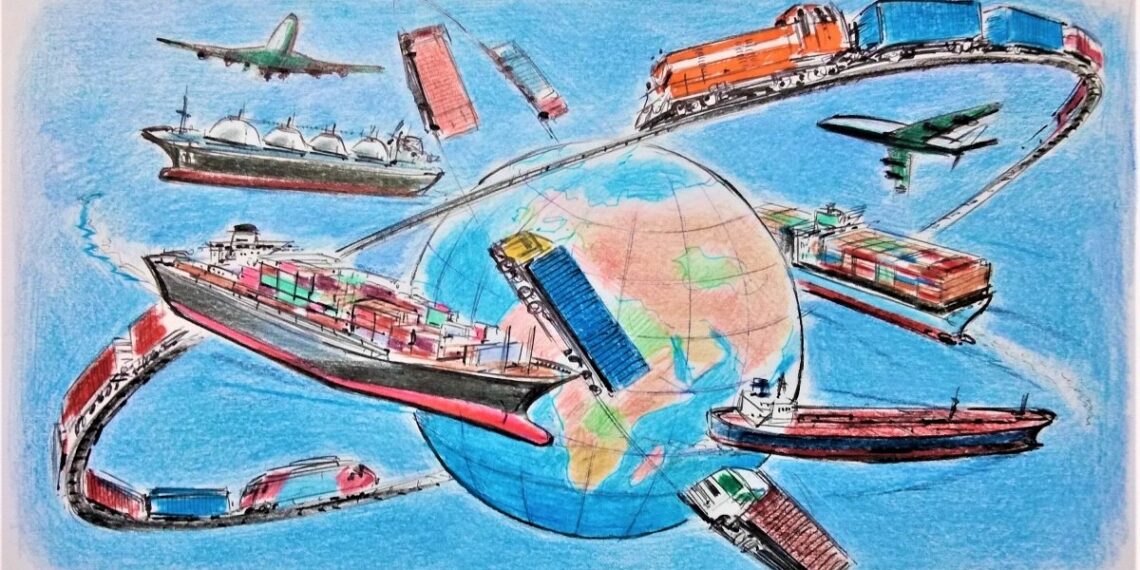The Worldwide trade has been predicted to grow more slowly than the global economy in the next decade.
The tendency towards a shift from the “trade-led globalism” of the past 20 years has been underscore as a capital reason.
According to a research by Boston Consulting Group (BCG), the year-on-year growth in global goods trade is projected to be 2.8%, dropping behind an annual GDP growth rate of 3.1%.
The report further stressed on the fact that, a dampened outlook for trade growth is part of a “reordering of the world trade map” after the Covid-19 pandemic and Russia-Ukraine war.
With regional trade corridors emerging at the expense of traditional routes between China, the US and the EU.
“The projected fall-off in US-China trade is one of the most significant developments in the updated global trade map, with 2032 trade value forecast to fall by US$197bn from its 2022 level,” BCG says.
By contrast, US trade with Mexico and Canada will grow by US$466bn in the next decade, while cumulative trade growth for the Association of Southeast Asian Nations is expected to reach US$1.2tn in the same period.
While India is also set to benefit from the shift away from China, with its international trade estimated to grow by US$393bn in the next 10 years, including US$124bn in trade with the Asian powerhouse.
Tim Figures, partner and associate director at BCG, tells GTR in a written statement the report suggests the tendency towards regional patterns of trade is here to stay.
Underscoring the Geo-political factors driving this course, Figures says, “We think that the geopolitical factors driving this – such as western sanctions against Russia, the increased tensions between the US and China and a new focus on economic security and resilience – are unlikely to dissipate in the medium term,”
“As supply chains are rebalanced and neighboring countries solidify their regional trade relationships, we expect to see lasting changes in flows of goods around the world,” says Nikolaus Lang, managing director and senior partner at BCG, and a co-author of the report.
BCG uses historical correlations and artificial intelligence to create its forecasts, and covers over 250 exporting countries.
Trade values are expressed in real terms.
Research published this week by the Hinrich Foundation and Oxford Economics suggests that supply chains for intermediate goods have continued to expand, and questions whether nearshoring is a “prevalent strategy” worldwide.
The report reiterates the decoupling of China and the US, but points to a growth in imports from China by G7 countries like Germany and the UK between 2018 and 2022, which rose from 11.1% to 15.9% and from 10.3% to 15.1%, respectively.
Discussing the consequences of a shift away from trade-led globalism for efforts to tackle climate change, Figures says countries and blocs like the EU that are moving towards net zero more quickly will be able to do so “without running the risk of their efforts being undermined by ‘carbon leakage’”.
This is the idea that more advanced climate policies in some countries could lead to an increase in CO2 emissions overall, if, for example, production is moved offshore or imports are upped from countries with less stringent policies.
“On the other hand, countries and companies may find it harder to access the inputs – such as critical raw minerals – that they need to decarbonise if new barriers to trade are erected,” Figures adds.
The EU recently introduced the first phase of its carbon border adjustment mechanism (CBAM), which is partly intended to combat carbon leakage by setting what it describes as a fair price on carbon emitted during the production of goods entering the bloc.
[Featured Art Word Credit]






